How to Bodysurf
How to Bodysurf:
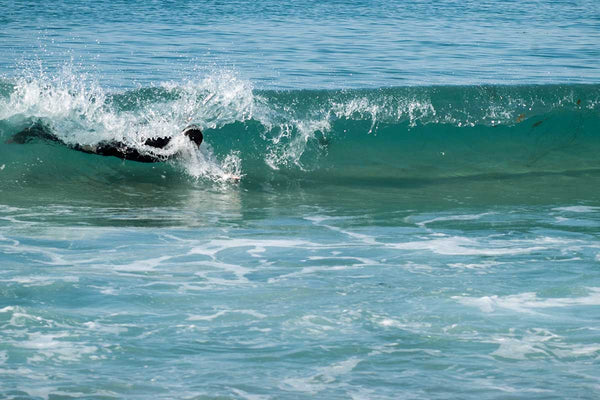
Weightless!
Partially an art and partially a sport, bodysurfing is about technique rather than strength or physical ability. We've all probably tried it at some point, some with more success than others. Bodysurfing is mostly about tuning into the subtleties of the ocean. It takes very little in the way of equipment so anyone who can hold their breath for a few seconds can do it!!
If you're an absolute beginner or don't have any fins you'll have the most luck at a sandy gradually sloping beach. You want to be able to keep both feet on the bottom -say in waist deep water. The trick is to gain some forward momentum as the wave pushes toward the shore. For safety reasons always keep one eye towards the sea and another towards the shore. We say never turn your back on the ocean, and, you want to make sure you won't run into anyone as you ride your wave toward the beach. Beginners should stick to waves in the 1- to 4-foot range and avoid waves that crash too close to shore, or beaches where there is a sharp drop-off in the depth of the water. If you take a few steps into the water and suddenly find yourself in water that is over your head, it’s probably not a good beach for practicing body surfing. This kind of beach typically creates large, crashing waves that are close to shore and can break bones.
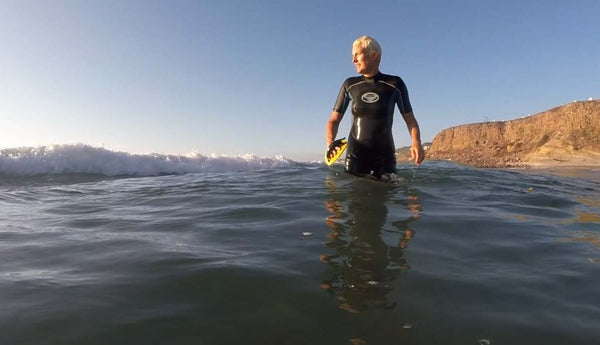
Notice when a wave comes it wants to push you towards shore. You'll also notice that receding water from the beach wants to pull you outward. This is why we recommend staying in relatively shallow water unless you have fins on your feet. The ocean is about energy moving in and out in equal amount. Energy moving into shore is the energy that you are going to tap into. The wave wants you to ride it!
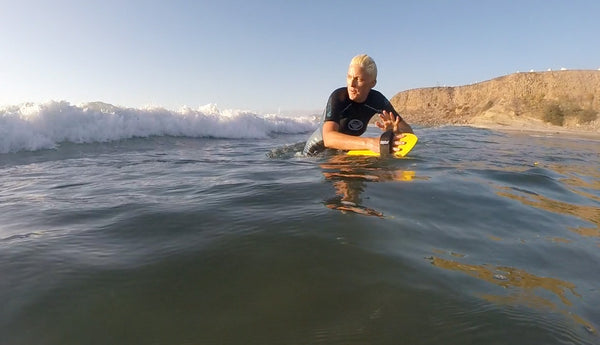
Ok, you're in the water up to your waist and no one is in front of you. You have your hand strapped into your handplane curved side down. With you seaward eye watch for a wave coming toward you. Just before the wave hits, you are going to wait for the wave to break behind you then jump forward toward the beach.
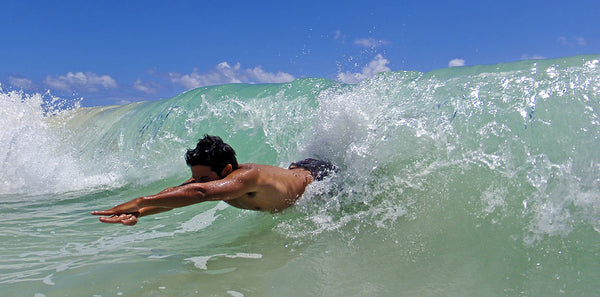
Image: discoverhawaiitours.com
Timing is very important. We recommend clasping your non-handplane hand on top of the other so both arms and hands are making a diving posture. Jump forward as if you intend to slide across the water on your chest and belly. The white water from the breaking wave will push you toward the beach.
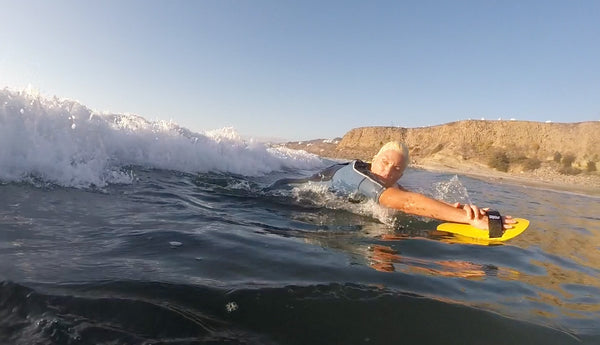
You want to keep as flat as an ironing board. At first you will have a tendency to keep your body stiff as a board. Eventually you will learn to relax and you'll notice that a relaxed posture actually works better than a stiff posture. Also we recommend keeping your face pointed down and to resist the tendency to look up as you move forward.
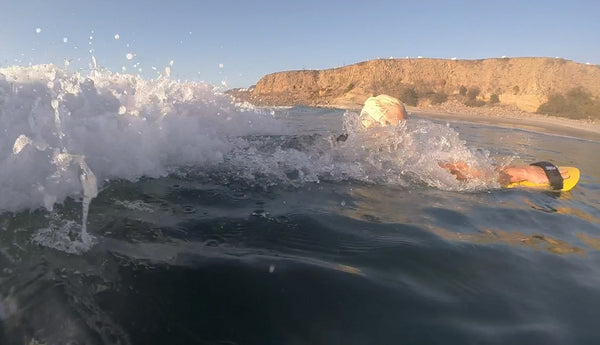
This is where the breath holding is important. After a few tries you'll start getting the hang of it and will then be able to lift your head to take breaths and get longer rides. But for the first few tries go ahead and keep your head down and your arms out in front of you. Kick your feet for additional propulsion. The best rides are the ones you don't need to kick your feet for, but often times you will need to kick your feet.
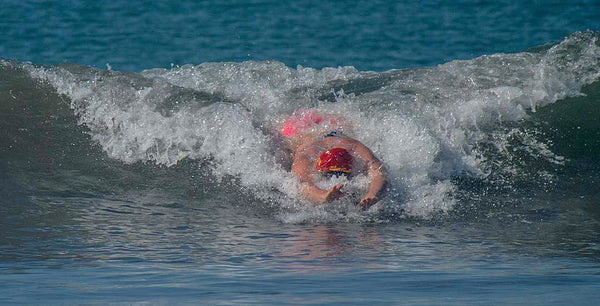
Good beginning form -arms outstretched, head down
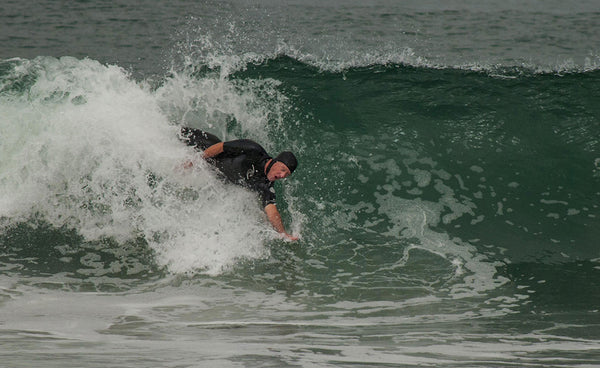
Proper advanced bodysurfing position without a handplane
The trick to body surfing is to get your head and shoulders down below your hips and legs. When this happens, the hips and legs rise and your center of balace shifts downward. Gravity, aided by the force of the wave and your swim strokes and foot kicks, starts the slide. Once the slide begins and you feel the exuberant rush, your head and shoulders will come up. Now the chest and handplane become a planning surfaces, and off you go.

A handplane allows you to get more of your body out of the water -increasing speed and maneuverability.
Once you get the feel for the forward motion and are comfortable with your face in the water, you can try riding on the face of the wave. We call it sliding. We slide across the face of the wave. The key for sliding the face of a wave is timing. You need to swim (or jump if you don't have fins) across the face of a wave just before it breaks. So this will take some practice. On larger, well-formed waves, more experienced body surfers cut diagonally across the face of a wave, trying to race the peeling curl. We recommend watching someone who looks like they have the hang of it. Notice where or how they are standing or swimming. Look at the size of the waves they are riding. Notice what the wave looks like before it breaks. We surfers are always looking at waves, we can see subtle differences in every wave, and you will as well after some time.
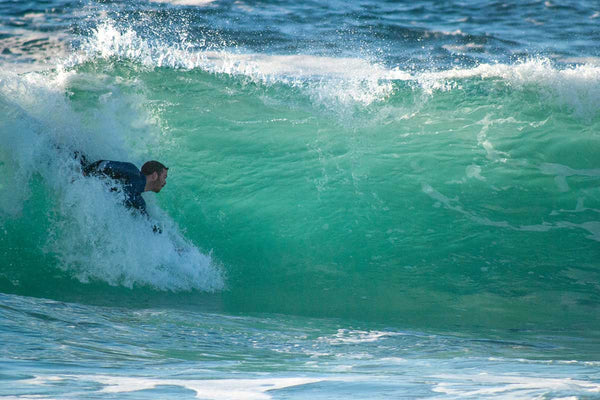
Sliding in La Jolla -Corbin Brown
After some practice - it might be a matter of hours or days - you'll get the hang of sliding. We recommend trying the handplane on one hand for a while and then the other. At some point one hand will feel more comfortable. The hand plane floats so you might want to remove the tether and switch hands while out in the water. Advanced bodysurfers lead with different hands to slide diagonally across the face of the wave depending on which way the wave is breaking.
To learn more about how a handplane works, follow this link.
See this link about more advanced techniques of bodysurfing.
Follow this link to learn more about wave anatomy, rip currents and some basic surfing rules.





The Sole Collective
Author